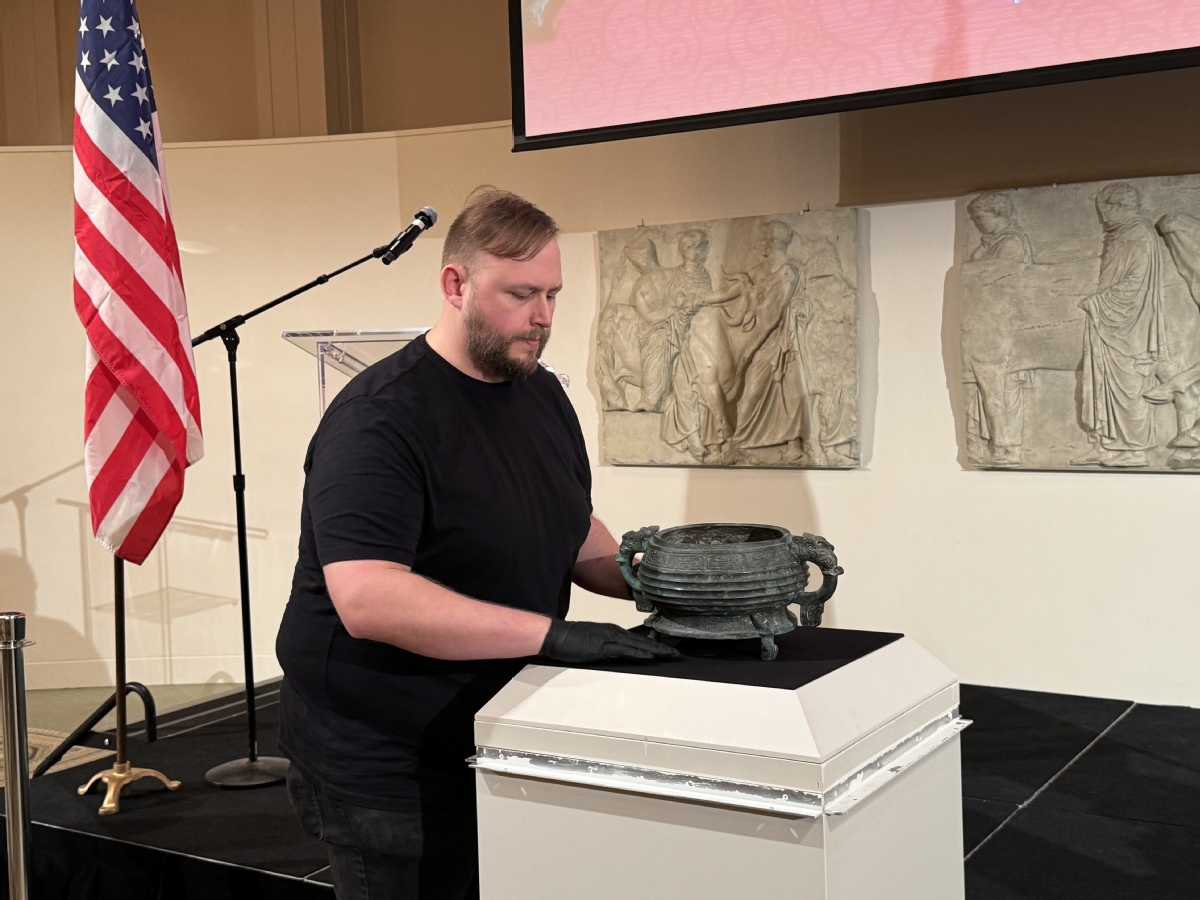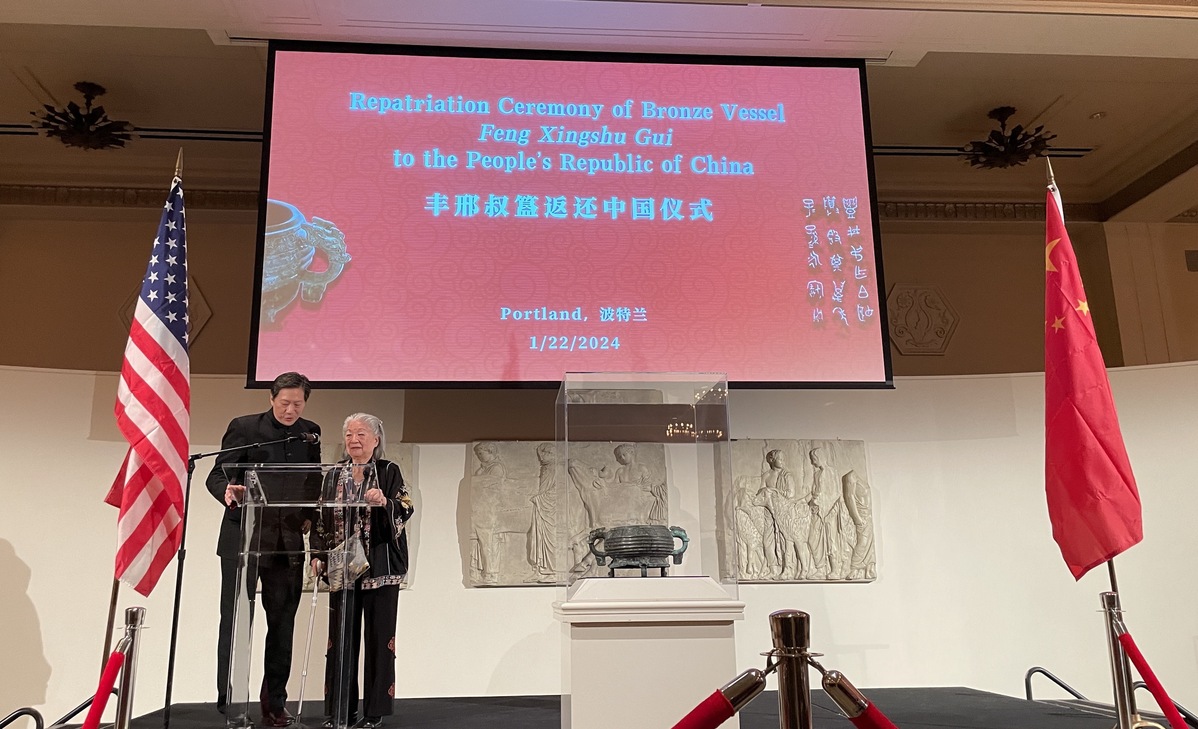An unexpected discovery of an ancient Chinese artefact leads to its rightful return to the motherland
(ANN/THE CHINA DAILY) – Raymond King’s journey to uncover a hidden treasure began innocently enough as he assisted his mother in sorting through old possessions in her New York apartment.
Little did they realise that nestled among the familiar antiques lay an unassuming bronze vessel, its significance reaching back at least 2,800 years to ancient China.
The revelation of this remarkable find came to light last year when King, residing in Portland, Oregon, enlisted the expertise of a researcher from Sotheby’s auction house to evaluate his mother’s collection.
To their astonishment, it was swiftly revealed that the bronze piece had been stolen from China in 1984.
“My grandfather got it from a dealer … and then gave it to my mother,” the entrepreneur told China Daily.
“We had no idea (when and for how much it was bought), but once we understood it was stolen, my mom’s reaction was just, ‘Give it back.'”

The bronze artifact, known as “Feng Xingshu Gui,” dates back to the Western Zhou Dynasty, crafted sometime between 877-771 BC.
Standing at 18 centimetres (cm) in height and 21 cm in diameter, weighing approximately 6 kilograms, it features a large bowl embellished with double handles fashioned in the likeness of a coiled-nose animal face, supported by three animal-shaped feet.
It features intricate abstract animal motifs beneath the mouth, complemented by eave tile-shaped patterns adorning its waist.
An inscription was cast into the interior of the vessel, meaning “crafted by Xingshu of the Feng State, dedicated to his wife Boji, a treasure for all his generations to come”.
The Zhou Dynasty developed the practice of inscribing vessels, and such vessels are highly prized. The inscriptions were meant to communicate the owners’ political and social achievements to their ancestors and for future generations to see.
Historians believe inscriptions are the single-most striking feature of the Zhou bronzes and were assiduously studied by later generations.
After it was stolen in 1984, China had never given up looking for it over the past 40 years, according to China’s Deputy Minister of Culture and Tourism Li Qun.

“Raymond King and his mother resolutely decided to do the right thing. They agreed to unconditionally return the artefact to the Chinese government, an act that is truly admirable,” Li said in a video message played at the repatriation ceremony held at the Portland Art Museum last month.
Also commendable was the international cooperation and a shared appreciation for the human cultural heritage, said Li, who is also the director of China’s National Cultural Heritage Administration.
The London-based Art Loss Register put Feng Xingshu Gui in its own database after Interpol listed it as stolen art in 2017. When the Sotheby’s researcher contacted the company about the bronze vessel, the company informed the Chinese embassy in London and was later connected with the office for recovery and restitution of cultural property in Beijing.
Li said the repatriation of Feng Xingshu Gui is an example of different countries taking concerted action to fight illicit trafficking of cultural property. It is also an outcome of 15 years of US-China cooperation in cultural heritage protection, fostered by a memorandum of understanding first signed in 2009, he said.
Over the 15 years, many Americans, like King and his mother, have helped to return the Chinese artefacts lost abroad to the motherland, Li added.
The agreement, renewed twice in 2014 and 2019, has recently been extended for another five years. It will act as a guideline for US Customs and Border Protection officers to restrict the importing of certain archaeological materials from China.
Between 2009 and 2023, 504 Chinese cultural relics were returned from the United States to China on 15 occasions, thanks to bilateral judicial cooperation based on the agreement document.

The vessel’s journey isn’t just about the repatriation, but also a testament to the power of shared heritage in building bridges between cultures, said Brian Ferriso, director of the Portland Art Museum.
“Culture connects us across time and place. Objects such as this ancient bronze provide meaningful insight into Chinese culture. And this exchange itself serves as another opportunity to build bridges between China and the United States,” said Ferriso.
The sentiment resonated with Zhang Jianmin, the Chinese consul general in San Francisco, who lauded the repatriation as an “important achievement of cultural exchanges” between the two nations.
“We will also remember and cherish the friendship of our American friends who have made this return possible,” said Zhang, who presented King and his mother a certificate of donation for their generosity.
For King, the return wasn’t a grand gesture, but a simple act of righting a wrong. “I don’t think it’s really ours to donate,” he told China Daily.
“I feel great that it’s going to where it belongs. Maybe one day it’d be nice to visit the museum (where the relic is housed in China).”






